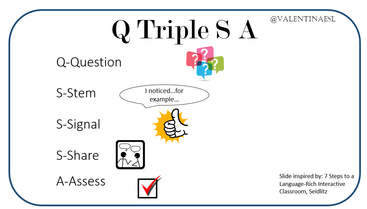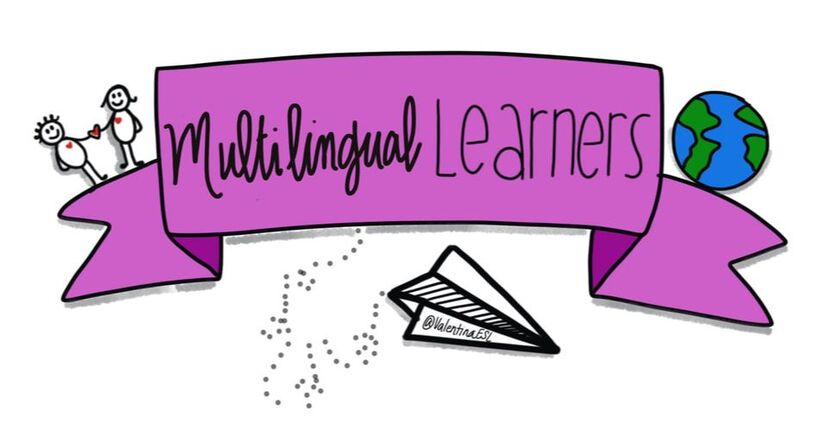 @ValentinaESL @ValentinaESL
If you are not using a structured conversation or talk technique regularly in your classroom yet, this is THE one to implement NOW. It's not only easy to implement right away, but it can also be used in every grade level and content area. There is practically no prep work need yet the benefits for students rock!
The benefits of academic talk are too great to avoid. If, as teachers, we do all the talking, then WE do all the learning. Talk makes learning stick. Students must verbalize to internalize.
When I was an ESL specialty teacher, I would spend the day co-teaching in various classrooms on my campus. One thing I noticed about classrooms, is that some were like rainforests. Picture this: plants of all types, flowers blooming, creatures crawling around, brightly colored birds and butterflies flying through, monkeys swinging through branches, frogs hopping about, etc. The rainforest was vibrant and alive and all types of life thrives in the ecosystem. While other rooms were like desolate, deserted islands...no life, no sound, no energy.
What made the classrooms vibrant rainforests where children thrived while others were desolate, deserted islands? The answer was ample opportunities for structured academic TALK. Classrooms where talk was scaffolded, taught and fostered with fidelity bred a natural sense of community. In these classrooms students felt safe to take risks and speak about the thoughts going on in their mind. They felt safe to change their mind when new information was learned. Students and the teacher recognized that it was more important to process thinking than to get the answer right. Q Triple S A is probably the best structured conversation technique that I have used. I first learned about it from the book 7 Steps to a Language-Rich Interactive Classroom written by John Seidlitz. Begin by posing an open ended, essential question. Thought provoking questions are the best for structured conversations. Crafting great questions takes practice and collaboration with other teachers can help. Post the question so students can see if and easily refer back to it during their conversation. Next, provide students with a sentence stem for the answer to the question. As a class rehearse how to say the sentence stem. This rehearsal not only helps students understand that they will need to use the stem but also helps if students aren't quite sure of how to say some of the words. Third, tell students to stand or give a thumbs up when they can complete the sentence. It can be any signal that you think of really. I like to use hands on hips and thinkers chin. This step is critical for 100% participation. When you begin to implement this step, it may take longer than you would like. BUT don't skip it. Kids will test you. If you stand your ground they will learn that you EXPECT EVERYONE to participate. Remember: It's not about getting the right answer. It's about thinking and learning. Gone are the days that we ask a question and call on one kid to answer it while everyone else zones out! Now that all kids are ready, we partner them up and let them share their answers. Partnering can take the form that you see fit. It may be a group share or it could be A/B partners. The important part here is that students know how they will share with their peers. Explicit instructions on sharing need to be delivered so that students who are reluctant speaks will understand the expectations while those that dominate talk will also understand where to draw the line. This share time gives the teacher an opportunity to listen in on conversations. The teacher can wonder the crowd and take notes that will guide the next steps in instruction. Note of caution: As you listen to conversations, be careful of your feedback. Often saying "Good job" can halt a discussion by making students feel they have completed the task. Perhaps feedback like, "You're on the right track. Can you say more?" or "What else can you tell us about that?" The final step in Q Triple S A, is to assess. This simple means that the teacher will RANDOMLY call on a few students to share their answer with the whole group. Now remember, they've all been given the opportunity to share in small group (which helped to lower their affective filter). That opportunity also provided a listening experience for them, so they may build on their initial answer. The reason for randomly calling on students is that it helps us to avoid always calling on the same kids. It also keeps everyone on their toes. We hold our kids accountable to the learning. Whether you are a kinder teacher or a high school algebra teacher, I challenge YOU to try this amazing technique with your kids! And let us know how it goes. Resources: Seidlitz, J. & Perryman, B. (2011). 7 Steps to a language-rich interactive classroom: Research based strategies for engaging all learners. San Clemente: Canter Press. Comments are closed.
|
Categories
All
|

 RSS Feed
RSS Feed
